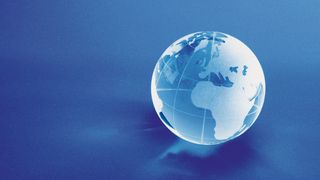
Conservative estimates state that annually 1,500 TWh of electricity are used, with ICT consuming 10 per cent of the world's electricity generation. With consumers now factoring in the environmental credentials of the companies they buy from, and the continued push by governments to reduce CO2 footprints, small businesses need to pay closer attention to the environmental impact their IT is having.
What is clear is that the impact that your business' IT has on the environment has over the last few years become a major factor in the purchase of all forms of IT. From desktop and notebook PCs to servers, the environment is now a component that must be considered. Green IT though, should be clearly defined. Here, the reduction of waste by more recyclable components and reduced energy consumption are two important components of the green IT equation.
Dell is one of the leaders in the push to reduce the impact that IT has on the environment with its "Design for Disassembly, Upgradeability, Serviceability" initiative. For small business owners, partnering with IT suppliers that have taken their own green initiatives can deliver real-world environmental gains. Looking at your entire IT installation and assessing its current environmental impact against government targets, will give your company a green benchmark to work towards, as it replaces its IT or looks to improve the efficiency of its existing infrastructure.
For small businesses, making the right choices when they make IT purchase is a practical way to improve the impact their IT has on the environment. Using more virtualisation to reduce server sprawl is a key component of a forward thinking IT development policy. As virtualisation has evolved, it has shown that it can offer small companies in particular a practical approach to efficiency gains that have the knock on effect of also reducing a business' overall environmental impact, as fewer servers need to be purchased.
Lower power devices
The adoption of thin clients, as more cloud-based services are used such as Dell's Wyse platform can also be a major environmental gain for smaller businesses in particular. Thin clients have a long lifespan when compared to typical desktop PCs that will be obsolete in around three years. Also, a typical desktop PC will consume around 100 Watts at full capacity; whereas, a thin client will consume just 15 Watts maximum. This clear energy saving can be a major benefit in cost, but can also be used to improve the green credentials of the business.
And with server installation, a move to efficient blade servers can have a major impact on your business' green credentials as well as its costs. The use of techniques such as server throttling can help your business improve its efficiency yet reduce its power consumption.
As Dell explains: "PowerEdge servers use throttling for many purposes, including optimizing the amount of work that is done for the energy consumed, ensuring smooth operation in the face of cooling challenges, and keeping component temperatures optimized inside the server during peak workloads."
Are you a pro? Subscribe to our newsletter
Sign up to the TechRadar Pro newsletter to get all the top news, opinion, features and guidance your business needs to succeed!
Making your business' IT more environmentally friendly means buying smart. Leveraging existing IT with more virtualisation is a clear first step. And when new purchases have to be made, placing the environment as a key driver behind each purchase will ensure the IT that is bought meets your needs, and protects the environment
- Now why not read 10 green projects that just might save the world
The TechRadar hive mind. The Megazord. The Voltron. When our powers combine, we become 'TECHRADAR STAFF'. You'll usually see this author name when the entire team has collaborated on a project or an article, whether that's a run-down ranking of our favorite Marvel films, or a round-up of all the coolest things we've collectively seen at annual tech shows like CES and MWC. We are one.
